People often correct me when I tell them I’m going to Tuscania. Italians will flash a pitiful smile at me, the poor foreigner mangling the name of Italy’s most famous region, Tuscany (Toscana in Italian.) But it’s not my poor Italian that’s at fault; there really is a place called Tuscania and, confusingly, it is located in Lazio, about 20 km from the Tuscany border.
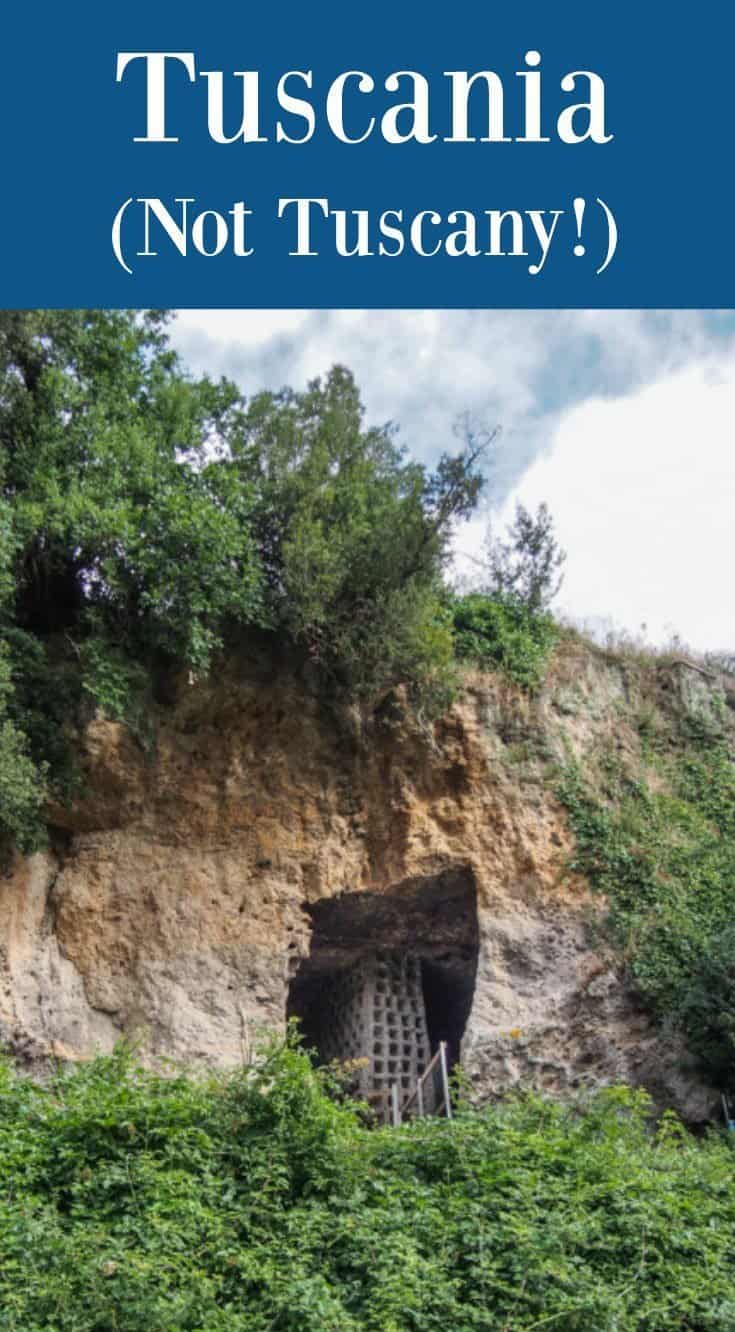
Tuscany, Tuscania
You can blame the Etruscans for this confusion. When the Romans were still stuck on their seven hills on the Tiber, the Etruscans held sway over large parts of central Italy. The Latin name for this region, Tusci, ultimately gave us both Tuscany and Tuscania, sites where the Etruscans lived. (Find tour info here)
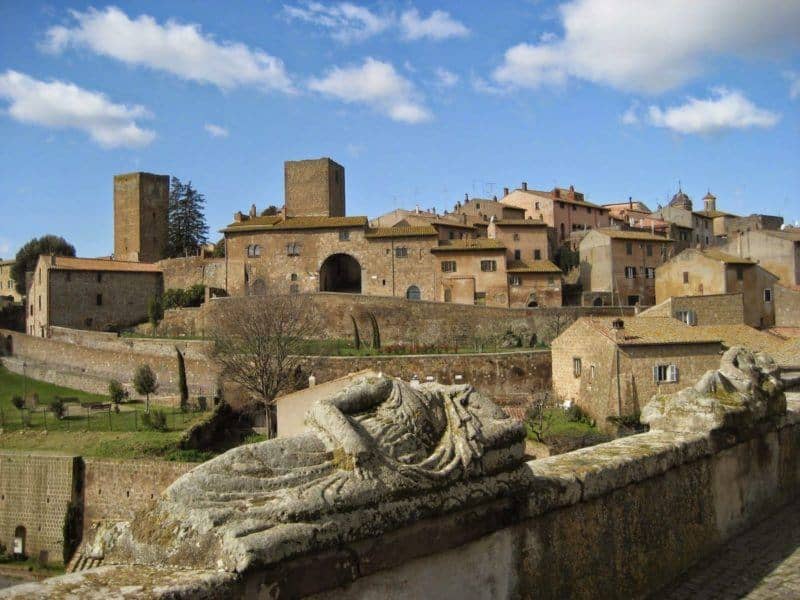
Etruscan faces
The Etruscans are alive and well in Tuscania—not literally of course, as they’ve all been dead for 2000 years. Their civilisation was gradually absorbed by the Romans in the 3rd century BC, but wandering around Tuscania you’ll be seeing plenty of Etruscan faces, carved in stone.
The town and its surroundings are littered with Etruscan tombs and sarcophagi. The best sarcophagi have been carted off to various museums around Europe—the Louvre in Paris has an excellent collection. But there are simply too many of them. So these 2500 year old works of art have been sprinkled around Tuscania’s Piazza del Commune (Town Hall Square), as well as near St Peter’s church, where they sit for decoration.
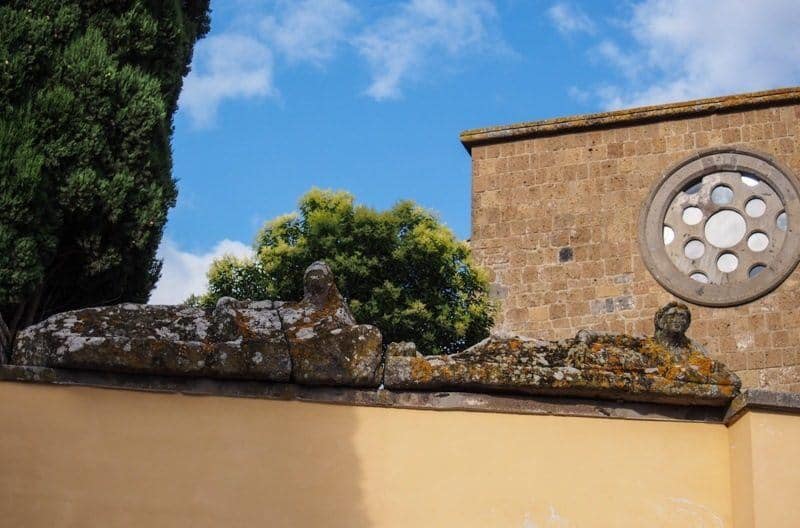
Anywhere but in Italy, these pieces would be sitting in a museum. Here, they’re just sitting outside, come rain or shine, because the museum was already full. An embarrassment of riches indeed.
Where it all started
Tuscania’s roots lie on the hill now known as Colle di San Pietro, or St Peter’s hill. It’s named for the magnificent Romanesque church that was built here in the 11th and 12th century, but St Peter’s hill had been inhabited for 1500 years by the time the Church of San Pietro was constructed in the then hyper-modern style that later became known as Romanesque.
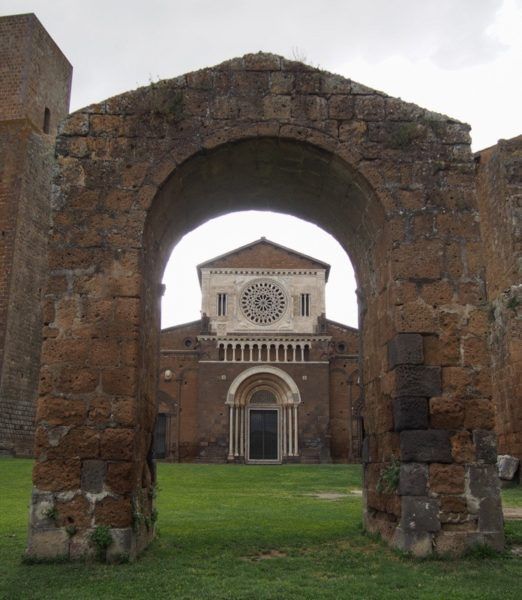
Be sure to step inside the church. It’s a magnificent building, which somehow survived the 1972 earthquake that shook the town, and it has a crypt whose pillars have been cobbled together from various ancient sites. A number of Etruscans will greet you in the nave of the church. Outside, traces of Etruscan and Roman walls and foundations are easily visible around the hill.
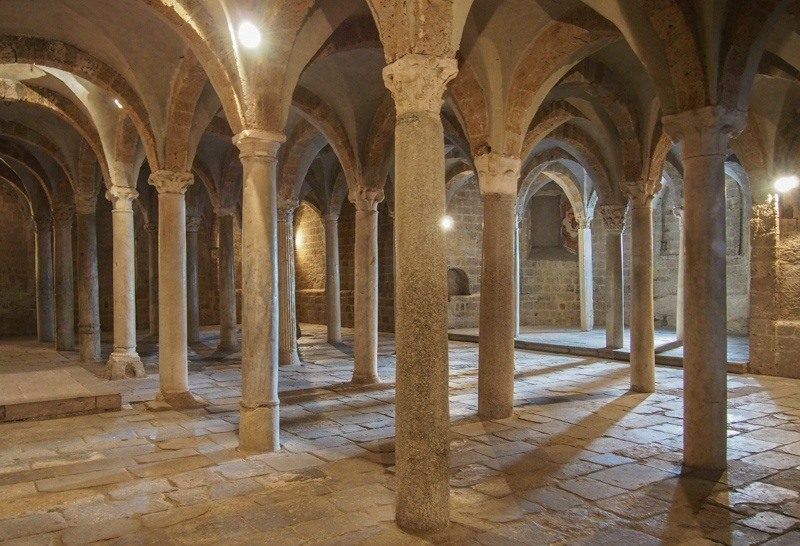
Those lazy Etruscans
Most Etruscan portraits show them reclining, and it has been said that a people too lazy to stand up and fight only deserved to be conquered by the notoriously pushy Romans. They frequently hold something that looks suspiciously like a Frisbee—which is as good an explanation as anything else, as nobody knows exactly what these disks were for. You see why the adjective ‘mysterious’ of often used to describe these people?
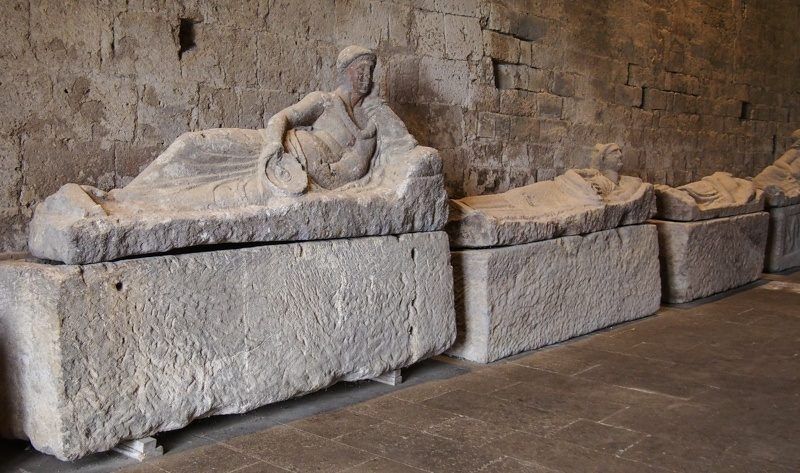
Etruscan tombs and pigeonholes
From St Peter’s hill, you can walk to some of the tombs that are litter the countryside here. Often these look like caves, but they are man-made.
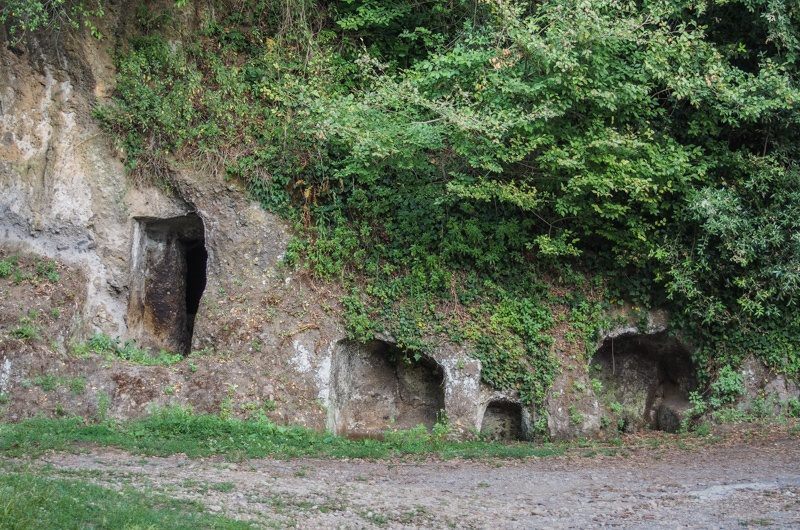
Most feature stone beds, and even pillows—a comfortable place for the dead to be laid to rest.
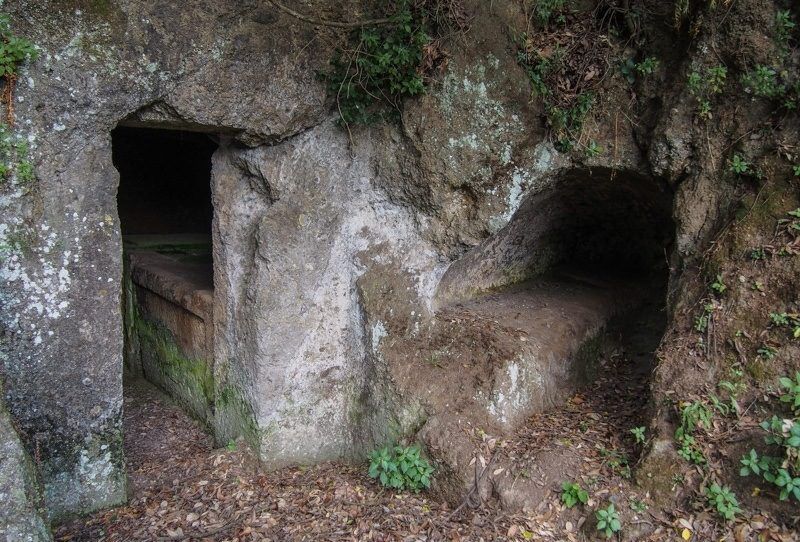
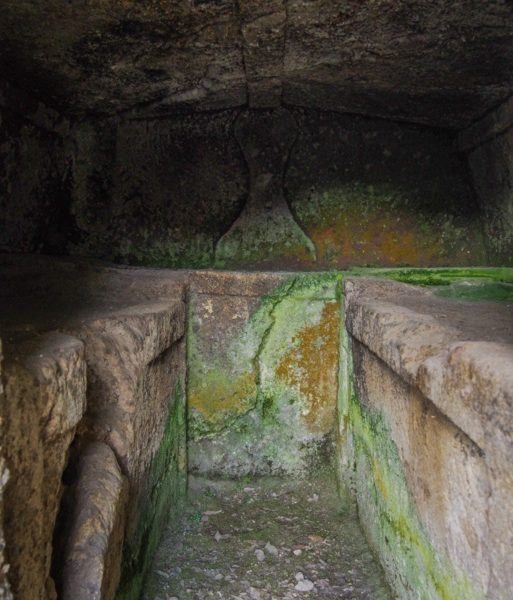
One of the most interesting sites is Le Scalette, which features a number of cave tombs as well as something that looks like antique pigeonholes. It appears to have been an Etrusco-Roman columbarium, a place where ashes or remains of the dead were placed—certainly a lot more economical than carving a massive cave tomb.
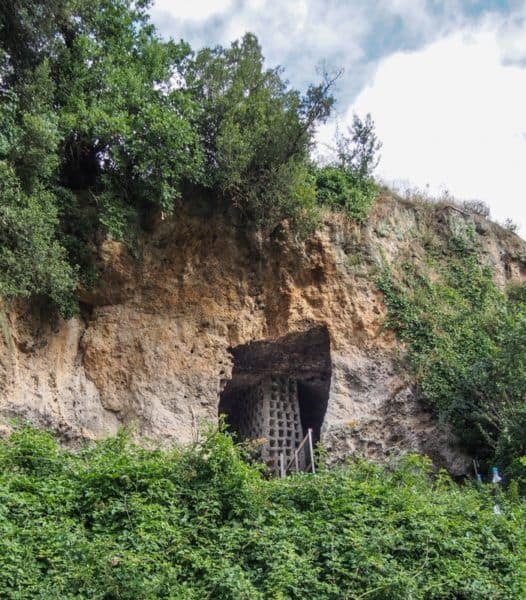
So next time you’re heading for Tuscany, consider stopping in its near-namesake, Tuscania, to pay homage to the people who coined both names a long, long time ago.
Getting there:
- Tuscania is just over 100km north of Rome and can easily be reached by car, following either the coastal highway A12 (faster) or the ancient SS2 Via Cassia (more scenic.)
- There are frequent COTRAL buses both from Tarquinia and Viterbo (both of which have direct train connections to Rome).
- For those on a cruise, Tuscania is an easy day trip from Rome's port, Civitavecchia.
Recommended restaurants:
You’ll be spoiled for choice when it comes to food in Tuscania.
- Torre di Lavello offers creative Italian cuisine on a lovely terrace overlooking one of the towns towers.
- Palazzo Ranucci sports the best view in town, if not in all of Lazio, and offers traditional Roman specialties.
- Caffè del Duomo has great coffee and snacks right in the square in front of, you guessed it, the Duomo.
More info:
- For more on Tuscania, see Minor Sights: The Town of Tuscania (Not Tuscany!)
- History buffs should check out DH Lawrence’s Etruscan Places: Travels Through Forgotten Italy, or for the full Etruscan Monty, George Dennis’s classic Cities and Cemeteries of Etruria is available as a free e-book.


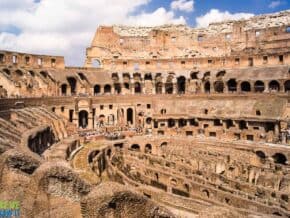
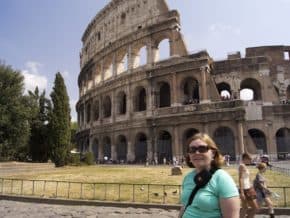
Tuscania certainly looks interesting! I checked out Michiel’s website and it’s definitely interesting. Always good to hear about new places and I love going on road trips to get to out of the way, unheard-of places. 🙂
Michiel has a great blog and he certainly writes about some great places. It’s a worthwhile website to be sure. We’ve had a lot of memorable experiences by following a local’s advice.
Very interesting! Thanks for sharing — I was unfamiliar with this place.
hi Rhonda and Anda,
Thanks for the kind words. Yes, Tuscania is well worth a visit. I hope you’ll get a chance to visit soon…
If you enjoyed learning about Tuscania, have a look at our site which is full of Minor Sights worth exploring. Happy travels!
What an interesting article. I didn’t know about Tuscania, so I could use the information provided. I’ll make it a point to visit this place next time I’ll be in Italy.
It does sound like a nice destination, doesn’t it? That’s one of the best things about guest posters: They share places and things we would never have known about otherwise. We want to visit as well!
I would love to have more time in Rome to visit Tuscania. Your photos are amazing. I feel like I am there with you.
Thank you. We would love to visit Tuscania as well. I’ll pass on your compliments to our guest poster.
Thanks for having me!
Thanks for a wonderful article! Your photos were perfect! You’re welcome to guest blog again at any time.